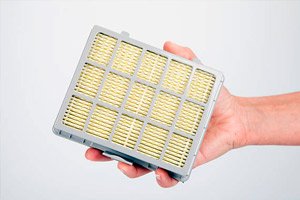
All iLive content is medically reviewed or fact checked to ensure as much factual accuracy as possible.
We have strict sourcing guidelines and only link to reputable media sites, academic research institutions and, whenever possible, medically peer reviewed studies. Note that the numbers in parentheses ([1], [2], etc.) are clickable links to these studies.
If you feel that any of our content is inaccurate, out-of-date, or otherwise questionable, please select it and press Ctrl + Enter.
Most air purification systems have not been proven to be effective outside of laboratories.
Last reviewed: 09.08.2025
 ">
">A new study by researchers at the University of Colorado Anschutz Medical Campus and the National Institute for Occupational Safety and Health (NIOSH) through the Centers for Disease Control and Prevention (CDC) found that while many technologies claim to clean indoor air and prevent the spread of viruses like COVID-19 and influenza, most have not been tested in people and their potential risks are not fully understood.
A study published in the Annals of Internal Medicine analyzed nearly 700 studies from 1929 to 2024 on engineered controls — such as HEPA filters, ultraviolet light, ionizers, and advanced ventilation systems — that are designed to reduce the transmission of indoor airborne infections. Although these technologies are common in homes, schools, and public buildings, the researchers found that only 9% of the studies assessed whether they reduced illness in humans.
“We were surprised that most of the studies were done in lab chambers, rather than in real-world settings where people live, work, or study. We need more robust studies that look at real health outcomes — whether people are less exposed to pathogens or get sick less often — rather than just measuring particulate matter in the air,” says Lisa Bero, PhD, a professor of internal medicine at the University of Colorado School of Medicine and co-author of the paper.
Most of the studies in the review focused on indirect measures — such as tracer gases, dust particles, or harmless microorganisms — rather than actual disease-causing viruses or bacteria. Very few studies tracked whether people actually became less likely to get sick when using air-cleaning technologies.
“Many of these technologies look promising on paper, but we just don’t know if they work in the real world,” says Amiran Baduashvili, MD, an assistant professor of medicine at the University of Colorado School of Medicine and the paper’s first author. “People are buying and installing these systems in their homes and schools in hopes of protecting themselves and their loved ones, but the science hasn’t caught up with the marketing yet.”
The study also raises questions about potential health risks. Few studies have examined harmful byproducts such as ozone, which can irritate the lungs and worsen respiratory conditions. Many air purification technologies, including ionizers, plasma units, and some ultraviolet systems, can produce ozone, but few studies have assessed their long-term safety in living and working spaces.
"Ozone and other chemicals produced by some air purifiers can cause respiratory harm, especially in children or people with chronic lung disease," said Louis Leslie, a senior research scientist in the Department of Ophthalmology at the University of Colorado School of Medicine and co-author of the paper.
While risks vary depending on the type of technology and the conditions under which it is used, scientists stress the need to pay more attention to possible unintended consequences.
“It’s worth checking to see if the manufacturer provides information about the potential harmful emissions from the device and what can be done to minimize them,” says Baro, also of the Colorado School of Public Health. “Understanding the potential risks is an important part of making informed decisions, especially as more people and organizations spend money on these technologies and install them in clinics, schools, and homes.”
The researchers call for a new generation of studies that evaluate these technologies in real-world settings — such as classrooms and hospitals — and track actual infections, rather than relying on proxy measures like airborne particle counts. They also emphasize the importance of assessing side effects, environmental impact, cost, and availability, including how applicable these solutions are to different settings.
They also recommend developing a standard set of health-related indicators for future studies to make the results more comparable and useful for public health policy.
“Public health decisions need to be based on reliable, independent data,” Bero concludes. “We’re not saying these technologies don’t work, we’re saying we don’t know enough yet. Some studies are funded by the companies that make the technologies being evaluated, which creates a conflict of interest. Until we know more, the public deserves clear and transparent information.”
For those buying an air purifier or installing a new ventilation system to reduce the risk of illness in their homes, schools, or workplaces, the researchers advise choosing technologies that have been independently tested in real-world conditions. They also recommend avoiding devices that produce harmful byproducts, such as ozone. And, most importantly, they emphasize that proven practices—improving ventilation, airing out, and regular cleaning—are still effective ways to make indoor spaces safer.
“This study highlights the urgent need for better scientific evidence to help make our indoor spaces safer, especially as respiratory infections continue to be a major public health threat,” concludes Baro.
